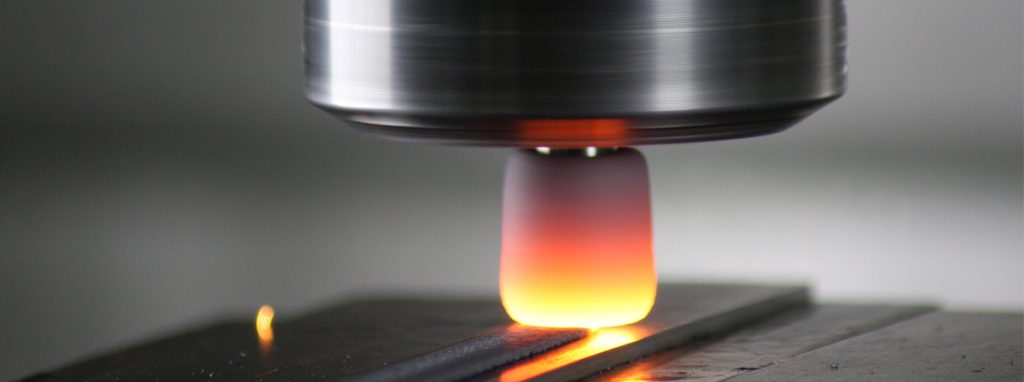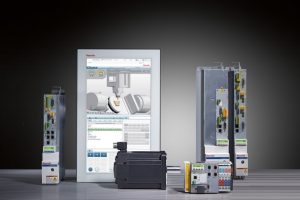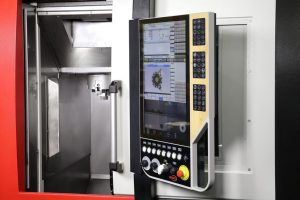 As 3D printing technology continues to advance, other technologies are advancing with it, including the Industrial Internet of Things (IIoT). Bosch Rexroth has some expertise in both and points out that the two are going to be more and more intertwined in the future. In the factory of the future, according to the company, additive manufacturing machines are going to be connected both horizontally and vertically to higher-level and neighbouring IT systems.
As 3D printing technology continues to advance, other technologies are advancing with it, including the Industrial Internet of Things (IIoT). Bosch Rexroth has some expertise in both and points out that the two are going to be more and more intertwined in the future. In the factory of the future, according to the company, additive manufacturing machines are going to be connected both horizontally and vertically to higher-level and neighbouring IT systems.
3D printers are becoming more sophisticated in terms of wireless control and automation; direct human intervention is becoming less necessary. Consider Project Skywalker, the automated 3D printing factory being developed by Voodoo Manufacturing. It’s being designed to be a “lights-out” factory that can operate independently of any human presence; as technology like this develops further, it will free up workers from having to do the mundane, time-consuming tasks such as removing items from the build plate and starting new print jobs.
The next step, according to Bosch, is the decentralization of control systems, which will receive programs as necessary from the cloud. The company also points to the combination of 3D printing and CNC systems and highlights its own MTX CNC system, which features a high-performance dual-core processor and decentralized intelligence for fast reaction times. The MTX system software includes several additive manufacturing-specific CNC functions for the purpose of precisely controlling the application of 3D printing materials.Their functions include an intelligent temperature control system and a 3D online simulation with collision recognition, which automatically visualizes the construction time, positioning and printing head travel. The standardized gcode is supported by any slicer software, and integrated NC encoding systems provide security.
Workflow digitization is another key area, including tasks such as print configuration, job management and machine monitoring including online process modification or controlling intralogistics. The MTX CNC system has an open system architecture and Open Core interface, allowing machine operators to easily integrate their workflows. This creates several benefits, particularly in pre-production, such as material simulations or the certification of quality-related parameters.
MTX systems have been used by multiple top 3D printer manufacturers, including Norsk Titanium, which established the first industrial-scale aerospace additive manufacturing facility in the world. Norsk Titanium is known for its Rapid Plasma Deposition machines, which happen to feature an MTX system which controls plasma burners as well as 10 servo axes for producing components and conveying or handling the titanium wire. The system also handles process optimization in real time by evaluating sensors and calculating correction values.
German machine tool manufacturer Weisser also uses an MTX CNC system for its additive manufacturing unit, which was presented for the first time last year. The system is equipped with an additive friction welding unit, or AFW, which allows fine layers of metal to be deposited onto metal objects and then precision-machined. This system creates final parts with minimal material use.Bosch Rexroth predicts that in the future, industrial 3D printers will be faster and more reliable, making them suitable for use in mass production. IoT connectivity enables 3D printers to be smarter and more autonomous, allowing them to play important roles in factories of the future while relying less on human intervention. This doesn’t mean that these smarter machines will put people out of jobs, necessarily, which is a great fear among the manufacturing community. Rather, people will be freed up for higher-level jobs, working together with machines to create more efficient, productive workflows.
Discuss this and other 3D printing topics at 3DPrintBoard.com or share your thoughts below.
[Source: Bosch Rexroth]Subscribe to Our Email Newsletter
Stay up-to-date on all the latest news from the 3D printing industry and receive information and offers from third party vendors.
You May Also Like
Precision at the Microscale: UK Researchers Advance Medical Devices with BMF’s 3D Printing Tech
University of Nottingham researchers are using Boston Micro Fabrication‘s (BMF) 3D printing technology to develop medical devices that improve compatibility with human tissue. Funded by a UK grant, this project...
3D Printing Webinar and Event Roundup: April 21, 2024
It’s another busy week of webinars and events, starting with Hannover Messe in Germany and continuing with Metalcasting Congress, Chinaplas, TechBlick’s Innovation Festival, and more. Stratasys continues its advanced training...
3D Printing Webinar and Event Roundup: March 17, 2024
It’s another busy week of webinars and events, including SALMED 2024 and AM Forum in Berlin. Stratasys continues its in-person training and is offering two webinars, ASTM is holding a...
3D Printed Micro Antenna is 15% Smaller and 6X Lighter
Horizon Microtechnologies has achieved success in creating a high-frequency D-Band horn antenna through micro 3D printing. However, this achievement did not rely solely on 3D printing; it involved a combination...































